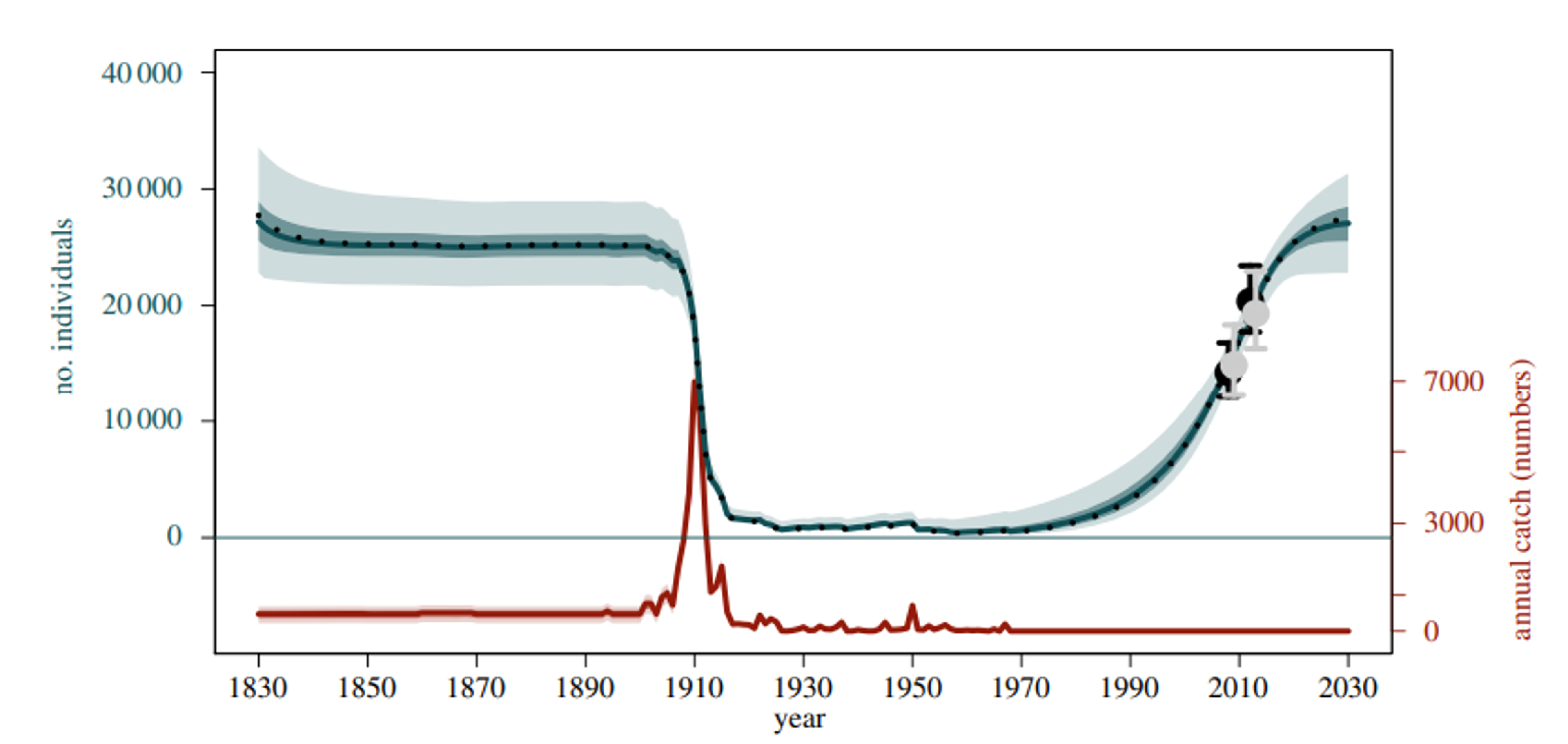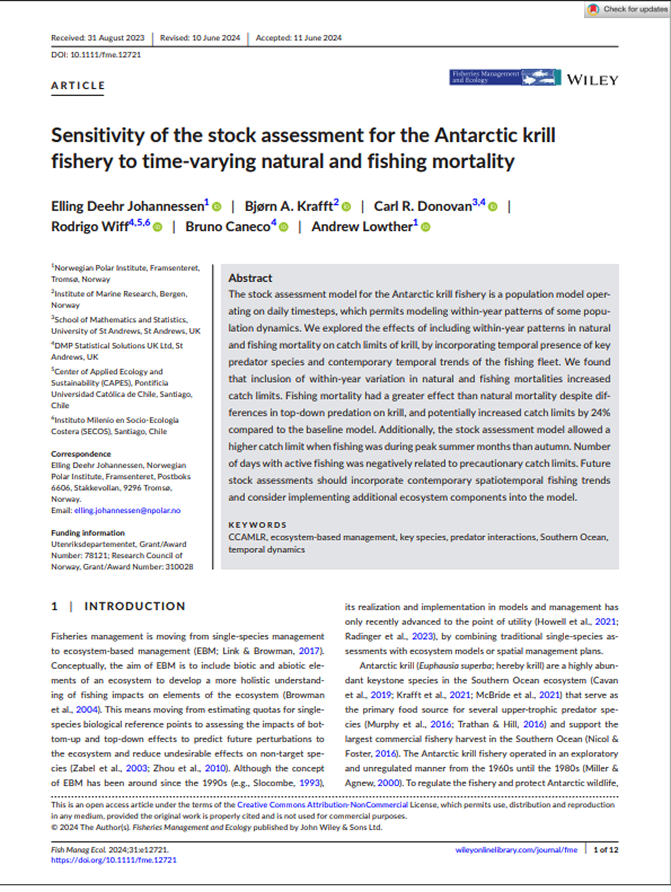Biomass
Fisheries management
Antarctic ecosystem
Krill (Euphausia superba)
Assessing the recovery of an Antarctic predator from historical exploitation
Summary
Western South Atlantic humpback whales have recovered remarkably from near-extinction, reaching 93% of pre-whaling population levels by 2019. The population declined from approximately 27,000 whales in 1830 to only 450 in the mid-1950s due to intensive commercial whaling. Following legal protection, the population has shown strong recovery. This recovery has significant ecological implications, particularly for Antarctic krill consumption in feeding areas around South Georgia and the Scotia Sea. The study used advanced statistical population modeling that combined historical whaling records, population estimates, and genetic information to assess recovery patterns. The current population size is estimated at approximately 25,000 whales, representing one of the most successful marine mammal conservation success stories.

1
This graph tracks western South Atlantic humpback whales from 1830 to 2030. The population declined from 27,000 whales in 1830 to fewer than 500 by the 1950s due to intensive whaling. After whaling ceased in the 1970s, the population recovered dramatically to nearly 25,000 whales by 2019, with projections showing full recovery by 2030.Key Findings
1
The western South Atlantic humpback whale population declined from nearly 27,000 individuals in 1830 to only 450 whales in the mid-1950s, but has since recovered to approximately 25,000 whales – reaching 93% of pre-exploitation levels.2
Historical whaling catches from 1830-1924 were previously excluded from assessments, leading to underestimates of both the original population size and the scale of historical exploitation.3
The study successfully integrated multiple data sources including whaling records, population estimates, genetic data, and struck-and-lost rates to provide the most accurate assessment to date.4
The recovered population now consumes an estimated 1.49-2.6 million tonnes of Antarctic krill annually, representing 2.5-4.3% of total krill biomass in their feeding areas.5
The population is projected to reach nearly 99% of carrying capacity by 2030, marking one of the most successful whale conservation recoveries.

